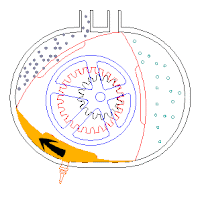In a complete combustion reaction, a compound reacts with an oxidizing element, such as oxygen or fluorine, and the products are compounds of each element in the fuel with the oxidizing element. For example:
- CH4 + 2O2 → CO2 + 2H2O + energy
- CH2S + 6F2 → CF4 + 2HF + SF6
- 2H2 + O2 → 2H2O(g) + heat
Complete combustion is almost impossible to achieve. In reality, as actual combustion reactions come to equilibrium, a wide variety of major and minor species will be present such as carbon monoxide and pure carbon (soot or ash). Additionally, any combustion in air, which is 78% nitrogen, will also create several forms of nitrogen oxides.
The flames caused as a result of a fuel undergoing combustion (burning)












